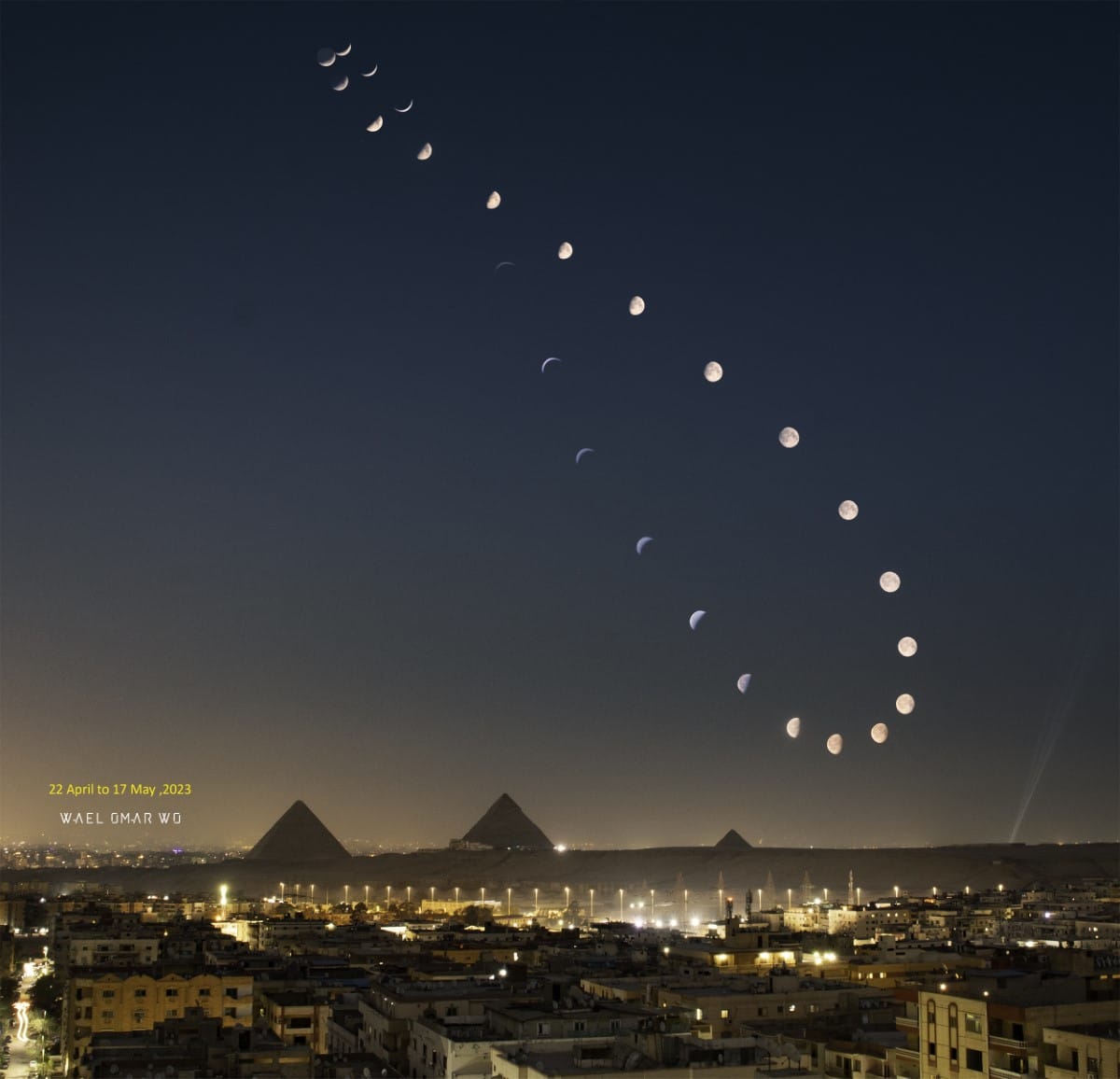
This post may contain affiliate links. If you make a purchase, My Modern Met may earn an affiliate commission. Please read our disclosure for more info.
One dedicated astrophotographer was able to cross an incredible photo project off his checklist when he spent a month creating a lunar analemma, an asymmetrical figure-eight curve in the sky. This type of image often refers to the Sun, but can also be used by other celestial bodies. As they are very time-consuming and difficult to create, very few people have done so. Astrophotographer Wael Omar decided to create what he believes is the first analemma made by an Egyptian.
In layman’s terms, an analemma is a diagram or photo that shows the position of a celestial body in the sky from a fixed position on Earth at the same mean solar time over a specific period. For the Sun, an analemma requires images each day for an entire year. For the Moon, the analemma can be completed over one lunar cycle, which lasts a month. In both cases, the resulting pattern is a figure eight, which is owed to the tilted, elliptical orbits of these celestial bodies.
To image the Moon correctly, Omar needed to research the proper position and then return each day, 50 minutes later than the last, to take his photograph. Not only did this require Omar to take off work, but he also had many sleepless nights waiting for the right time to take the photograph.
“There were some cloudy nights, and I was a little lucky to see the Moon through [the clouds] when the time of the shoot came,” he tells My Modern Met. “I used a Canon 200D camera with an 18mm lens to shoot the images from the same location every day.”
During the last week of the project, the proper time to take the photo happened during daylight. As Omar notes, the photos taken over the course of those days appear a bit blue. Since the Moon was only visible in his images when zoomed in, he decided to work overtime to make them even more legible. So, in order to obtain greater detail in those photographs, he ended up using his GOTO mount and Redcat 51 scope and placed them over what he’d taken with his 18mm lens.
Not satisfied with just having all the images of the Moon, Omar wanted to ensure that his image was memorable by including a carefully thought-out foreground. As he wanted to clearly represent Egypt in the photograph, he chose the pyramids. After researching a good angle to capture the pyramids in a new light, he then had to obtain permission to climb a minaret that would give him the vantage point he was after.
Luckily, the person in charge was excited about Omar’s project and gave him permission to climb the minaret’s internal steel ladder 165 feet to the top. All of the time and dedication were worth it once the final image of the lunar analemma over Cairo was published.
For Omar, it’s been a treat to see how his image sparked discussion online. “Many people comment on the image to know why the Moon exhibits this pattern in the sky, as it was the first time for them to see the shape of the Moon’s orbit. It thrills me to make people search, understand, and learn. And also, for me, I gain too much knowledge when discussing this with other people all over the world.”
